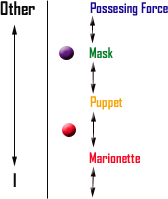**Warning** This post will contain a spoiler about season 3 of The Wire. You’ve been warned. Also, if you’re responding, please don’t spoil seasons 4 or 5 of The Wire for me. K?Thx. **Warning**
So last night, Brand and I are watching the last three episodes of Season 3 of the Wire, and along comes the scene where Pryzbylewski is standing, gun in hand, looking at the dead body of the cop he’s just shot. (For those who don’t know and didn’t care if they were spoiled, Pryz is a misfit wildcard inept cop that got through the Academy on nepotism, who early in Season 1 nearly beat an innocent kid blind for sassing him, and ended up behind a desk. His becomes a real redemption story when turns out, despite everyone’s best guesses (including Pryzbylewski’s) that he’s actually “real po-leece” when it comes to the analytical trace work involved in Major Crimes. The first time he’s out of the office in like two and a half seasons, he gets involved in a random chase and ends up mistaking a cop for a perp and shooting him dead.)
At this point, I hit pause on the g-d-clickybox and turn to Brand. “That there is what Vincent’s looking for when he talks about mechanics that bring on undesirable emergent story.” There wasn’t really any lead up to the scene, just a few quick shots interspersed with the other scenes: McNulty and Pryz eating Chinese food and getting the call, McNulty running through a back ally while Pryz round out in the car to head him off. Then there’s McNulty on the walkie, and he hears the shot fired, and finally there’s Pryz standing there with his gun out, looking freaked out of his mind. The killing is out of the blue, and all the lead up and shooting itself don’t even happen on screen. It’s obviously the work of disruptive mechanics.
Brand loved it. I didn’t. …. Shocking, I know.
But it did make for this great two hour conversation before we ended up getting back to the show. There’s a lot from that conversation I won’t get to in this post, might get into later if I’m up to it.
There ensues this real clear articulation that happens over how we interact (differently) with media – mainly movies and TV, but touching on print stuff too. He likes this scene with Pryz because it’s dramatic, because it moves the story, and because it lends a kind of realistic satisfaction to the series. In real life, our shortcomings come out to haunt us in the moments we think we’ve overcome them. When life is at its most brutal it often is over before you know what’s happening. It’s swift and explosive and afterwards nothing is the same. The Wire also (mostly) strives to provide a sense of real-lifeness as cop dramas go, so this makes the presence of this kind of event even more satisfying, in his eyes. He feels this turn of events is full because it’s a value add. It provides another kind of drama that enriches the story overall.
Brand, through his story socket, connects with the event and appreciates it cognitively. It’s intellectually fulfilling.
While I totally get why he likes what he likes there (and see it as valid) I don’t like it because it feels empty. It feels like the show has witheld. I’m engaged with the show, and I’m very much enjoying it because it does a very good job of creating complex characters in all shades of grey, and then all of a sudden, it changes the rules on me and I’m not allowed access to the character experience. On a dime, the character’s life is changed forever, I have no access to understand what really happened, nor to make the transition with the character (because I have been sharply and emotionally decontextualized from him). All of a sudden Pryz feels foreign to me and I can’t empathize with him properly. Sure, I can step away from it and type now: It is an interesting narrative device. I can cognitively appreciate what they were trying to do, and even how they succeeded in doing it. I even mean it when I type that, but it doesn’t change the fact that it was unfufilling to me in the moment of engagement.
I, through my character socket, became unconnected to the event which prevented me from appreciating it in the impassioned moment. It’s emotionally unfufilling.
